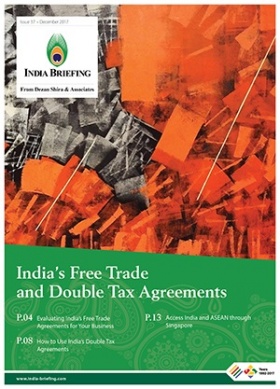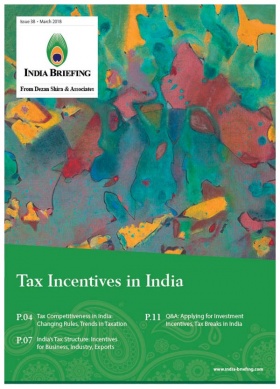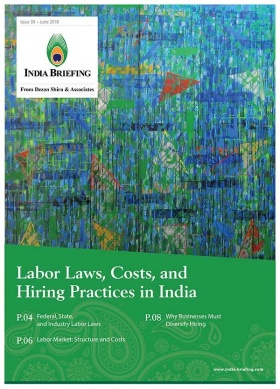Can India Win the US, China Trade War?
On April 3, 2018, the Trump administration levied aggressive tariffs on steel and aluminum imports.
Valued at US$3 billion (Rs 205 billion) for China, it sparked an immediate retaliation – China imposed an equal tariff on US goods a day later.
On July 6, 2018, the US levied a further 25 percent tariff on US$34 billion worth of Chinese products, with US$16 billion more to go into effect after a public hearing period. China has responded by imposing similar duties on US$34 billion worth of US exports, and has more tariffs planned to match the next round of US tariffs.
The tit-for-tat raising of tariffs have caused global trade hostilities to reach an all-time high, and involve the world’s biggest economies – US, China, India, EU, and Russia.
Moreover, the retaliatory trade policies acutely undermine global economic growth – still recovering from the 2008 financial crisis.
While the US and China seem to be on the verge of a full blown trade war, their global trade partners, including India, are watching closely to see whether they can exploit new market openings and trading opportunities.
Goods affected by US-China trade hostilities
In raising tariffs, the US is particularly targeting China’s high technology exports.
The largest set of tariffs are centered around alleged intellectual property theft by Chinese companies, done by forcing technology transfers from US companies or by making joint ventures in the technology industry mandatory for doing business in China.
The sudden escalation may even be influenced by China’s announcement of its “Made in China 2025” program – a government scheme to transform the country into a globally advanced manufacturing powerhouse.
About 800 Chinese products – from flat screen televisions, industrial robots, and cars to nuclear reactor parts – will face a 25 percent tariff when imported into the US.
The tariff hikes also reference several commonly held American trade anxieties; US President Donald Trump has alleged that the cheap imports of steel and aluminum were ‘unfair’ to local businesses.
In the second round of tariff hikes, the US cited ‘national security risks’ to justify the higher duties on technology imports – making it difficult for China to challenge the decision at the World Trade Organization (WTO).
China, meanwhile, raised tariffs on agriculture products, such as oilmeals, soyabeans, groundnut, pork, and seafood produce; chemical products and pharmaceuticals; medical equipment; and mechanical parts for the energy sector.
The selection of products by the Chinese has been deliberate – targeting exports that originate from middle America – where a majority of President Trump’s vote bank resides.
This tactic puts pressure on the Trump administration to retreat, especially given the upcoming midterm elections in November 2018. All 435 seats in the US House of Representatives and 35 of the 100 seats in the US Senate will be contested, besides state and territorial elections.
Implications for India
The retaliatory tariff impositions have forced several countries to implement their own tariff changes, India included.
India has so far targeted 29 US products; the higher tariffs may come into force on August 4, 2018. Both countries are currently engaged in bilateral negotiations to finalize a trade pact.
Pressure from the global tariff escalation might soften US policies; however, trade talks with the US have not favored India in the past.
More importantly, China, India, and other developing countries, such as Vietnam and the Philippines, are re-evaluating their trade relations with each other to tide over the decreasing access to US goods and markets.
India, China slash tariffs for APTA members
Previously unanticipated, the tariff escalation launched by the US has forced countries around the world to enforce pending agreements and revitalize trade partnerships.
Recently, India slashed import duties on 3,142 items imported from its Asian neighbors under the Asia Pacific Trade Agreement (APTA) – a preferential trade agreement between Bangladesh, China, India, Laos, South Korea, and Sri Lanka.
China, on its part, initiated a reduction or removal of duties on 8,500 items for APTA partners – on agricultural produce, pharmaceuticals, and other goods that have suffered a tariff hike in the US.
The tariff relaxations are an important step forward for Asia-Pacific trade, which has been stuck in limbo since India signed onto APTA in 1975.
Global trade patterns are shifting, and India needs to secure market access for key products while also protecting its industry from trade-related stress.
US, China trade war creates opportunities for India
India’s bilateral relations with China have been fraught with tension up until recently.
Territorial disputes, trade imbalance, and geopolitical tensions due to China’s expanding military influence across India’s backyard have caused both countries to routinely view the other with suspicion.
This could soon change. With US, China ties deteriorating on both economic and strategic fronts, China could favor warmer ties with India.
China’s recently concluded Trade Policy Review at the WTO included suggestions from trading partners to improve its regulatory environment and the ease of doing business in China; India participated in these discussions.
A medium and long-term road map to address the mounting trade deficit between China and India is also underway.
The WTO mandates trade and related polices to be examined and evaluated by the WTO’s Trade Policy Review Body (TPRB) at regular intervals.
China’s non-tariff barriers, such as opaque regulatory policies and restrictive trade practices are at the fore of negotiations.
India also seeks an easier business environment for its companies and extended visa facility for Indian professionals in China.
The two Asian superpowers are working closely to resolve trade irritants, and are keen to grow respective domestic industries while improving market outreach. The US’ aggressive tactics towards China may end up redefining China-India ties.
About Us
India Briefing is produced by Dezan Shira & Associates. The firm assists foreign investors throughout Asia and maintains offices in China, Hong Kong, Indonesia, Singapore, Vietnam, and Russia.
Please contact india@dezshira.com or visit our website at www.dezshira.com.
- Previous Article ERP Implementation Strategy for Businesses in India
- Next Article India Approves WIPO Internet Treaties, IP Protections for Online Content Creators















